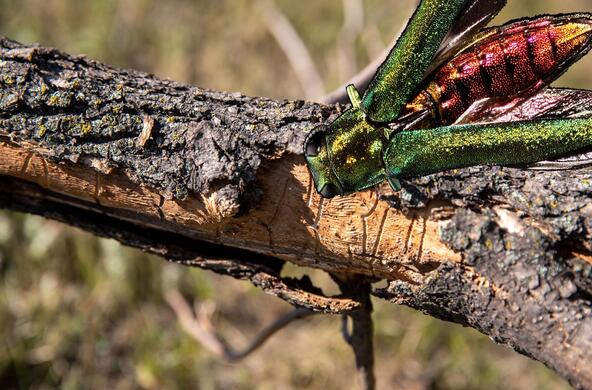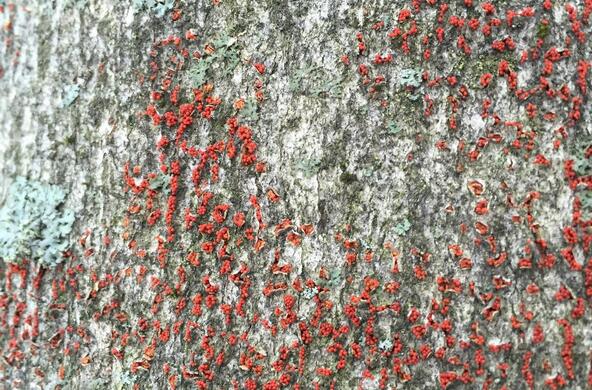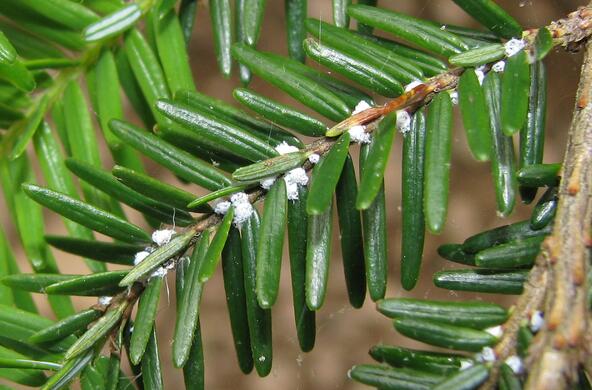Invasive pests like the emerald ash borer and Asian longhorned beetle pose irreversible threats to New York’s forest ecosystems by targeting native trees and, in some cases, threatening to wipe them out for good. The threat posed by these pests, which primarily enter the country through packaging used in international trade, is “one of the most severe and urgent threats facing U.S. trees,” according to the Cary Institute of Ecosystem Studies, an environmental research nonprofit based in Millbrook.
That’s why the Cary Institute is asking Congress to do something about it. In July, the nonprofit delivered a petition with over 1,700 signatures to the United States House and Senate Agriculture Committees asking for a Congressional hearing on invasive forest pests.
The petition was spearheaded by Tree-SMART Trade, a Cary Institute project led by Dr. Gary Lovett, forest ecologist. Invasive pests, and trying to keep them out of the country, have been a career focus for Lovett. He’s visited Congressional offices on the matter before, but this is the first time he’s submitted a petition for a hearing.
In an interview with the Times Union last week, Lovett said he wants Congress to investigate why the government’s current practices for keeping invasive pests out aren’t working. First, he said, he would like Congress to bring in experts who can explain the problem in terms of its causes and impacts.
“There is a lot of science on this,” said Lovett. “We know what it does, economically and ecologically. And we know why we have the problem. We know how these things are getting in.”
On that note, he said, he’d like the Department of Agriculture to explain what they’re currently doing to solve the problem and why it isn’t working.
“I would like them to call the leadership of the Department of Agriculture to explain what they’re doing to try to solve this problem to keep these pests out,” said Lovett. “Why aren’t those efforts working? I would like a self-assessment from the USDA.”
Asked why he thinks current practices aren’t working, he said he believes the government isn’t being firm enough in its regulatory standards for international trade. International trade is how most invasive pests get into the country, often through wooden packaging, such as wood pallets.
“We are being too soft on our trading partners that send us material that is infested,” said Lovett. “It seems to me if we repeatedly get infested material from a country, actions should be taken. I think it’s the strength of the reaction to the problem that is causing the problem.”
Lovett said actually, regulations have been strengthened in recent years. In 2017, U.S. Customs started penalizing companies every time an invasive pest was found in its wooden packaging. Before that, it took five infractions before they received a slap on the wrist.
“All of a sudden some of these companies are faced with large fines,” said Lovett. “That was a big government change in the enforcement of the rules, and it has inspired companies to find a solution.”
But, he said, it’s not enough. Pests like emerald ash borer and hemlock woolly adelgid are threatening to dramatically change the forest landscape of the Northeast, and New York is the hardest hit — not just in the Northeast, but the United States at large.
“We have over 60 different invasive pests and pathogens in New York, which ranks us No. 1 in the country,” Lovett said, adding a deadpanned “yay” to note that the distinction is not one to be happy about. He said New York is particularly vulnerable to such pests because it is a high-traffic area for international trade and has been for a long time. Once a pest gets in, it’s hard to get it out, and the state has been accumulating them for a long time.
In addition, Lovett said, New York’s trees are particularly susceptible to pests from European and Asian trade partners because the regions share tree genera, such as pines, maples, and oaks. To illustrate this, Lovett used a hypothetical example of a pest in Asia that attacks maple trees.
“In Asia, the tree and bug co-evolve, so that the bug does not do major damage to that tree, the tree has defenses against that bug in its native range,” he said. “Over here, the bug finds maple trees that have not co-evolved and don’t have those defenses. That’s when you have a problem.”
Emerging major concerns, Lovett said, are the spotted lanternfly, which attacks grapes and apples, and the Asian longhorned beetle, which attacks maples.
“Maples are the most dominant tree species in New York State,” said Lovett. “That’s a huge, huge threat for us. So far, the outbreaks have been contained and in some cases eradicated by federal and local action. But it seems like (international shippers) keep bringing it in. Eventually, this thing is likely to get out, and that is a huge threat to the state.”
That, he said, is precisely why the government needs to pay close attention to the matter and enhance its response.
Lovett said he isn’t sure what will happen next, whether the matter will be taken up by Congress this year or whether it will be the next Congress that might. If it’s the latter, that could mean a shift in leadership in the House, the Senate, or both. But, he notes, invasive pests aren’t a party-line issue.
“These pests kill trees in red states and blue states both,” he said.





